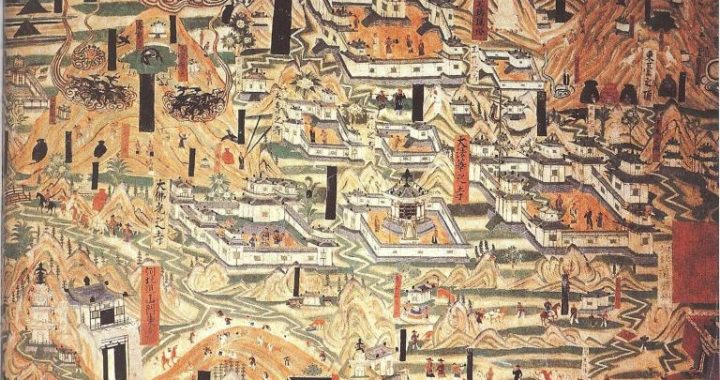Local Food and Folk Art in Xi’an
3 min readIn such a historically and culturally renowned city as Xi’ an, food is more than food. It is a display of the local culture. Here, local delicacies and famous dishes originated from both the south and the north of China are ready to arouse the appetite of any visitors.
Fish Stewed in the Milk Pot is a famous dish originated from a royal delicacy of the Tang dynasty court. With a carp, ham, magnolia petals and fragrant mushroom stewed in the milk soup, this dish is rich in protein, minerals and vitamins.

Gourd Chicken is said to be originated from the Tang dynasty as well. The way of cooking the dish is quite amusing in that the chicken is bundled up before it is cooked,. Since the bundled chicken looks like a gourd, the dish is named “gourd chicken”. The chicken needs to be boiled, steamed and fried. After going through the three steps, the dish looks appealing, smells good and tastes crispy. Containing much protein and saturated fatty acid, it is also nutritionally good for people.

Guifei Chicken Wing is another local delicacy originated from the royal court of the Tang dynasty. It was named such because Yang Yuhuan, the beloved concubine of Emperor Xuanzong who is also known as Yang Guifei(“Guifei”in Chinese literally means concubine), loved eating chicken wings. It was said that after a thorough study the royal cook chose the freshest and tenderest wings and cooked them with many flavorings. Cooked in a way to best preserve the original taste of chicken wings, Guifei Chicken Wing contains much protein and little fat.

Beef or Mutton Paomo (crumbled bread soaked in beef or mutton soup) is a local snack with a long history. Back in the late Ming dynasty, during the reign of Emperor Chongzhen,a restaurant called Tianxilou was specialized in making beef or mutton paomo,. When eating the food, one must tear the bread to pieces and soak th crumbled bread in the soup. Since the soup is seasoned with lots of flavorings, the delicious taste will remain in your mind long after you have finished eating.

Helmet Pancake is another local snack which tells an interesting story. When the Qianling Mausoleum of Emperor Gaozong and Empress Wu Zetian of the Tang dynasty was constructed, small pancakes were cooked for the manual workers. But there were so many manual workers and the need for food was so great than the original smallpancakes were replaced by much bigger ones which looked liked helmets. Thus the pancake got its name “helmet pancake”. Thick at the center and thin at the brink, the pancake is crispy and sweet-smelling and can be preserved for a long time.
Xi’ an is famous not only for its food culture but also for its folk art. For hundreds of years, the land of Xi’ an has provided fertile soil to different types of folk art such as Qinqiang opera and the farmers’ painting of Hu county.
Qinqiang Opera,a folk Chinese opera originated from the rural areas of the ancient Shaanxi and Gansu, took shape in the Tang and Song dynasties and saw much development in the Ming and Qing dynasties. Now this folk opera is featured by melodies that do not have many changes yet sound impassioned and soul-stirring.

Since the dialect and living habits vary from place to place within Shaanxi province, Qinqiang opera is classified into four schools: the eastern school, the central school, the western school and the southern school. Qinqiang opera performed in Xi’ an has absorbed the merits of the eastern and western schools as well as those of other operas such as Peking opera. Thus it sounds loud and rough sometimes, soft and gentle at other times. Among the popular plays are The Tiger-shaped Jade Pendant, The Trial of Chen Shimei, and Wandering around the West Lake.
Farmers’ Painting of Hu County has a long history and sends forth a strong local and country flavor. With imaginative pictures usually painted with bright colors and in an exaggerated way, the paintings can catch people’s eyeballs at the first sight and have a strong decorative function. It is a treasure of the Chinese folk art.








